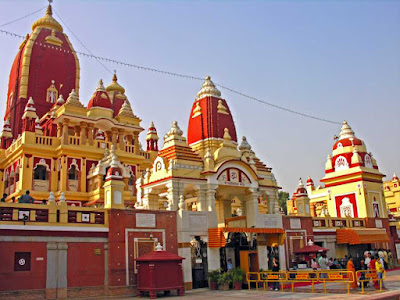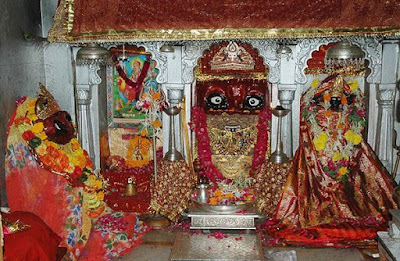Kalka Mandir
Kalka Mandir
 |
| Kalka Mandir |
About
 |
| Kalka Mandir |
Kalka Mandir also is known as Kalkaji Mandir is a famous Hindu Mandir, dedicated to Hindu Goddess Kali, located in the Delhi, India, near Nehru place.
History
While Âthe Hindu scriptures have many references and legends regarding the birth and acts of the Goddess Kali, the legend which tells about the circumstances attending to the birth of Maa Kalika Devi at the Kalkaji Mandir is:
 |
| Kalka Mandir History |
It is believed that the Goddess Kalkaji, pleased with the prayers offered and rituals performed by the Gods on the advice of Lord Brahma, appeared on this mount, known as Surya Koota Parvata, and blessed them. Ever since the Goddess has taken this holy place as her abode and has been fulfilling the wishes of her devotees. During the Mahabharata, Lord Krishna and the Pandavas are said to have worshipped this Goddess during the reign of Yudhisthir.
Modern Structure
The temple complex, as it stands today, is constructed of brick masonry, finished with plaster (now with marbles) and is surrounded by a pyramidal tower. The central chamber which is 12-sided in a plan, 24 feet across, with a doorway in each side, is paved with marble and is surrounded by a verandah 8'9" wide and containing 36 arched openings (shown as the exterior doorways in the Parikrama). This verandah encloses the central chamber from all sides. At the middle of this arcade, opposite the eastern doorway, there are two red sandstone tigers sitting on a marble pedestal on which the inscription engraved on the marble railings is repeated. The language of the inscriptions is Urdu and the characters on the railings as well as on the pedestals are Nastaliq without any pretensions to antiquity. Between the tigers, there is a stone image of Kali Devi with her name engraved on in Hindi, and a trident of stone standing before it.
References to History
According to government records, the temple of Kalkaji is said to have a very ancient origin, but the oldest portions of the present building are believed to have been constructed not earlier than the 1764 AD by the Maratha rulers.In 1816 A.D. Mirza Raja Kidar Nath, the Peshkar of Akbar II, is said to have made some additions to it. Over the last five to six decades, a considerable number of dharamshalas have been erected in the vicinity by the Hindu bankers and merchants of Delhi place. The said temple Kalkaji is built on the land of Shamlat Thok Brahmins and Thok Jogians who are the pujaris of temple Kalkaji and the pujaris perform Puja Sewa as per their monthly turn. The Thok Brahmins consist of Four Thullas, namely Thulla Tansukh, Thulla Rambaksh, Thulla Bahadur and Thulla Jairam. they are classified into Gharbari Jogi and Kanphada Jogi.[citation needed]
It is said that the persons of Thok Brahmins and Thok Jogians since were owning the said land, once upon a time very long back when were grazing their cows found that the cows were not giving milk after grazing and it was revealed that the cows delivered their milk on one Pindi which had some encryptions on it and at that time Goddess Kalika gave darshans to those people and asked them to reconstruct the temple as the said place was completely ruined due to neglect and then the Thok Brahmins and Thok Jogians started worshipping their and the Kanphada Jogi since was a person who renounced the world and was living a separate life was made to stay there for look after of the said place and he was also permitted to perform puja sewa and receive offerings for one month in every rotational monthly turn.
From that time onwards the yogis of Nath Sampradaya have been serving the Goddess and are enthroned as Baba Sandhya Nath, Baba Sahaja Nath, Prithvi Nath, Rama Nath are remembered with great respect. They were renowned yogis of their time empowered with special spiritual powers and visions.



Comments
Post a Comment